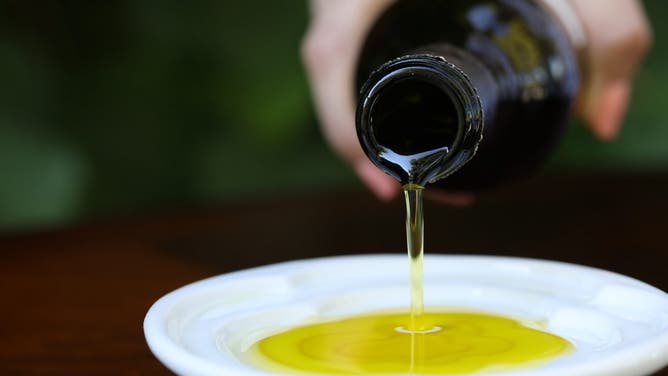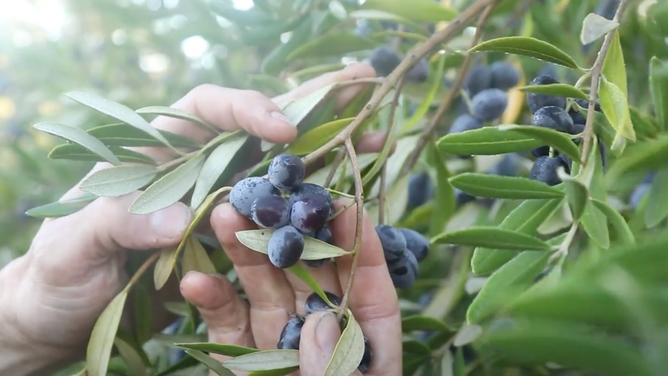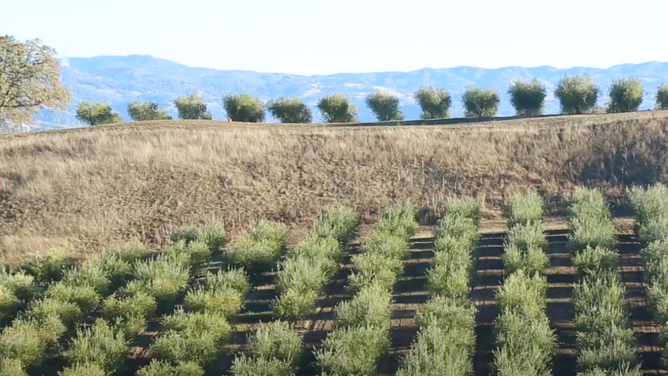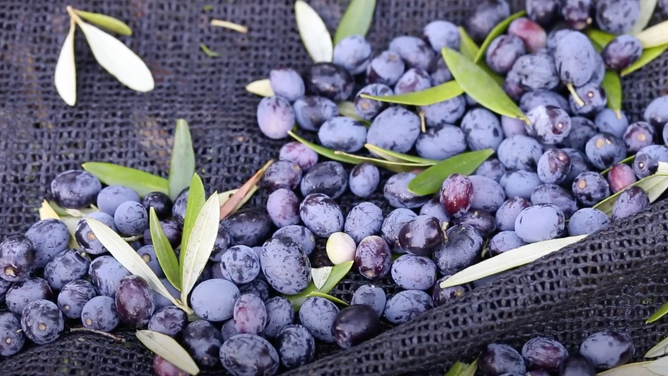Vineyard changes strategy for olive harvest after recent weather-related challenges
Olive oil is centric to the start of Hanukkah.
Sunday evening marks the beginning of Hanukkah. After the Jews fought to reclaim the Holy Temple in Jerusalem, they found only one day’s worth of olive oil to use for the daily menorah lighting. Miraculously, that small amount of oil burned for eight straight days.
Since then, olive oil continues to benefit not only lighting menorahs but also heart health. But with the recent weather extremes, the state with the largest production of olives has been feeling its effects.

Jordan Winery Extra Virgin Olive Oil
(Jordan Vineyard and Winery)
Due to extreme heat and prolonged drought, last year’s harvest in California's Alexander Valley was below average.
This forced Jordan Vineyard and Winery to work so that they could get back on track this year.

Olive trees at Jordan Vineyard and Winery
(Jordan Vineyard and Winery)
"Last year’s olive harvest was below average, so this spring we pruned the trees," Brett Young, Jordan Vineyard and Winery Agricultural Director says. "If we predict a big crop year is on the horizon, we will prune the trees to offset the continuation of a large crop year to year."
Doing so helped the vineyard’s olive yield by quite a bit.
Jordan has 16.5 acres of olive trees on its property. The average olive yield during the past 13 years is around 19 tons. Their yield for 2021 was more than 26 tons.

Olive trees at Jordan Vineyard and Winery
(Jordan Vineyard and Winery)
Young attributed better weather in 2021 for an overall better crop.
"We were fortunate enough to have ideal weather during bloom and flowering this year, which allowed us to have a nice healthy crop," Young said.

Olives at Jordan Vineyard and Winery
(Jordan Vineyard and Winery)
And as far as needing help for the drought conditions, Young said, "We installed a new drip hose with emitters to improve our overall irrigation distribution and uniformity in the orchards."
With the many microclimates in California’s valleys, the constant need for close monitoring is key to continue the upkeep of vineyards’ olive harvest.